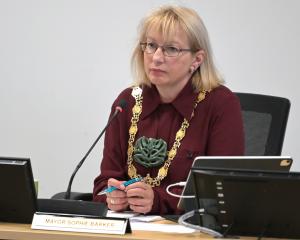Not a moment too soon has come the Government's formation of a new body to drive its long-term recovery plan for Christchurch.
Yesterday Prime Minister John Key and Gerry Brownlee, Minister for Christchurch Earthquake Recovery, launched the Canterbury Earthquake Recovery Authority (Cera), to provide "leadership and co-ordination of the ongoing recovery effort in Canterbury".
Cera will be established early next month as a stand-alone Government department and will have a lifespan of five years, with its operations reviewed annually.
For it has begun to dawn on all concerned just how vast and complex is the task of rebuilding the country's second largest city, just how important it is to the economy, and how emblematic it may yet prove of this Government's leadership - particularly as the post-quake era moves from one of crisis management to reconstruction.
Mr Key has proved adept at the former: he was on the scene early after the September 4 earthquake, quick to grasp the severity of the Pike River tragedy and, equally, rapidly back to Christchurch to survey the damage following the shake of February 22.
The Prime Minister has demonstrated he has an instinctive knack for crisis management - in as much as what is mostly required in the immediate aftermath is reassurance and morale boosting, compassion and empathy, understanding and a sense of having shared the hardship and pain experienced by those closest to tragedy. There can be little criticism of the speed or intent or his reactions - as much as opponents might mutter under their collective breath about the priceless leadership opportunity such cataclysmic events afford. (Recent history tells us it is not always the case: witness the mess the Bush Administration in the United States made of addressing Hurricane Katrina.) As the Government knows, however, now comes the hard part.
This week it announced a raft of earthquake tax relief measures, and the extension of Government assistance for business and workers affected by the quake.
The support subsidy for employers and job-loss cover for workers will be extended until April 18 - and then by a further round of assistance with tighter application criteria.
But the Government has clearly signalled it does not have a bottomless money pit from which to carry on paying for non-productive assistance.
This phase of post-earthquake aid is coming to an end.
Hence the need to allay any potential vacuum by instituting the next phase of recovery with the launching of Cera.
There had, in fact, been signs that some aspects of post-quake management were beginning to fray at the edges, including the unedifying sight of businessmen breaching the barricades in Christchurch in protest at Civil Defence's refusal to allow them access to their premises; there have also been numerous tales of poor or non-existent communication with owners who have found their buildings demolished without their knowledge; and there appeared to be a false start to the new authority when it was canvassed that senior civil servant Martyn Dunne would head it - when in fact it will be led, in the interim, by Deputy State Services Commissioner John Ombler while a permanent appointment is sought.
Management of the new authority will need to be adroit.
For it will have a range of extraordinary powers "to relax, suspend or extend laws and regulations which would be used responsibly and for clearly defined purposes related to earthquake recovery". It will also be able to acquire, hold deal with or dispose of property.
It will need to use such powers wisely.
To maintain the confidence of the people of Christchurch it will want to consult widely, listen and liaise closely with the Christchurch City Council, and various other local bodies - and be seen to be making progress.
Unless a tight rein is maintained on proceedings, there will be political dangers for the Government.
As winter sets in and post-quake stoicism gives way to inevitable pockets of frustration or resentment, Cera will have its hands full steering Christchurch through the maze of challenges the first stages of its reconstruction present.











